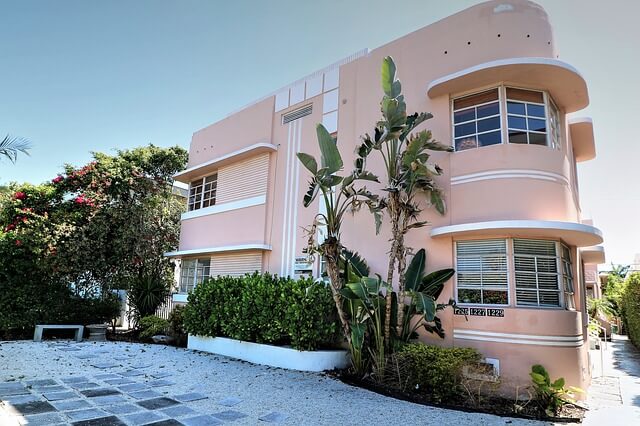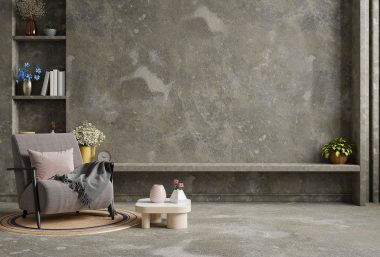Art Deco Architecture: Know Everything About The Timeless Style
Top blog articles
Have you ever taken a step back from your house and wondered what inspired its architecture? When it comes to renovating your home, you’re going to want to do a little digging to find out more about its architectural style before using a sledgehammer. Doing so is critical to making sure that your structural changes complement the integrity of the existing design. And, if it happens to be the timeless Arts Décoratifs or Art Deco architecture, we envy you!
The architectural style was a breakthrough in terms of its modernistic approach. This contemporary design is still one of the best there ever was.
If you want to remodel your Art Deco style home, you need to learn more about Art Deco architecture. There is such an interesting history attached to the design. Only after getting to know of it, will you realize the importance of this architectural wonder.
Let’s take a look at some of the features of the art deco architectural style that has been used in residential homes for decades.
What is Art Deco architecture?
Arts Décoratifs or Art Deco is a signature design style that revolutionized the 1920s and 30s with its luxury and exuberance. It’s characterized especially by sleek geometric or stylized detailing. It uses man-made materials such as stone, concrete, stucco, aluminum, and steel.
The humble beginning
Interestingly, the style was an entry in a design competition for the Chicago Tribune Headquarters in 1922. It was submitted by Finnish architect Eliel Saarinen. But, it was not chosen! However, it became a topic of many conversations for being a new and exciting architectural style.
When was the Art Deco era?
Art Deco architecture caught global attention in 1925 at the Exposition Internationale des Arts Décoratifs et Industriels Modernes in Paris. It was the first time that designers like Émile-Jacques Ruhlmann, Jean Dunand, and Pierre Chareau showcased their groundbreaking work on such a big platform.
The Art Deco architecture — known for gleaming lacquered or veneered surfaces, stylized geometric details, sharp lines, and corners — developed into a major style in western Europe and the United States during the 1930s.
This architectural design was welcomed with open arms because it offered a break from its past precedents of revival-style houses. It was modern. It was the first American architectural style to look forward rather than in the past for inspiration.
Art Deco was often called Moderne, or Art Moderne, one of the most advanced design ideas of the 1930s through to the end of World War II.
Art Deco style vs Art Moderne style
Architectural historians describe both as Modernistic. Both styles are part of the architectural Modern Movement of the early 20th century. But, the Art Deco and Art Moderne styles are actually quite distinct in appearance.
Art Deco buildings have a sleek, stepped outline, linear appearance with stylized, often geometric ornamentation while Art Moderne has a horizontal rather than vertical emphasis. It’s characterized by rounded rather than angular corners and less surface ornamentation.
Art Deco buildings often feature low-relief decorative panels at entrances, windows, and roof edges. They make use of smooth-finish materials such as stucco, concrete block, glazed brick, stone, mosaic tile, or terracotta.
Chevrons, zigzags, and other geometrical motifs are popular ornamentation on Art Deco style. While some buildings have expensive hand-crafted decoration, others use machine-made repetitive decorations to keep costs down. Generally, ornamental treatment is often limited to the most visible parts of the building. Otherwise, the cost can skyrocket.
The influences
Art Deco has stood the test of time. Influenced by Art Nouveau, the Bauhaus, Cubism, and Serge Diaghilev’s Ballets Russes, it also had inspiration from native American decorative arts, Egyptian architecture, ornate designs from Persia, and even nature as well as antiquity.
This creative movement, in turn, influenced the architecture of most American cities. It impacted fashion, furniture, and fine arts. This form of architecture continued through the 1940s, showing up in many of the glamorous homes seen in Hollywood movies.
Initially, Art Deco architecture was utilized in the commercial industry, government headquarters, and movie theaters. Eventually, the design moved into residential areas, especially apartment buildings. Most of these buildings are still in use, a testament to the rich architectural history.
Fine examples of Art Deco architecture
If you are ever in New York City, look up the Chrysler Building. This 1,046 feet architectural landmark was designed by ace architect William van Alen. It was completed in 1930. Interestingly, its steel spire is stylized with sunburst motifs and eagle gargoyles. A sight that continues to take everyone’s breath away even today.
The Eastern Columbia Building in Los Angeles was built in 1930 by Claud Beelman. With a striking turquoise terra-cotta exterior, the landmark is a fine example of visual arts and modern design.
For a satisfying and perfect Art Deco project, dynamic collaboration between those working on the work is needed. The architects, designers, painters, and sculptors must work in sync.
A case in point is the popular hotel Delano in Old Miami Beach, Florida. It was built in 1947 by architect Robert Swartburg. Right from its opulent doorway to the geometric orientation, the building is a specimen of expert minds working together to weave magic.
So how do you identify a typical Art Deco building?
- Modernistic design that stands out from the crowd.
- Majestic yet contemporary design.
- Smooth wall surface, generally lacquered or veneered.
- Sharp lines and corners.
- Decorative elements using geometrical detailing, zigzags, and chevrons.
- Low-relief decorative panels.
- Stepped front/house facade.
- Large, airy windows.
- Decorative spandrels on windows.
- Reeding (convex decoration) and fluting (concave decoration) along doors and windows.
- Flat roofs with parapets, spires, or tower-like construction.
- Decorative motifs on doorway — with elaborate pilasters and pediments.

Pixabay
This kind of architectural marvel is not just stylish, it’s a symbol of opulence, luxury, and wealth. So, if you own an Art Deco home, know that it’s an important part of history. And, you are lucky!
Any renovation, or changes to this structure, needs to be dealt with carefully.
What you need to know before you start renovating
Before you bring in a professional contractor to begin renovating your Art Deco home, there are a few factors to consider. First, it’s important to decide which unique features of your house you want to keep before making any changes. For instance, you may not be able to replace an antique Art Deco doorway as easily today if you remove the existing one.
Unless a feature is totally non-functional, or in a bad state, our advice would be to preserve the original and try to repair it with minimum changes.
How much will your renovation cost?
This kind of renovation might take longer and go slightly over-budget if you’re not careful. But, if you plan your home remodeling well and communicate your requirements to a professional, the entire process will be easy and quick. Before you begin the work, it’s helpful to find out the renovation cost estimate.
Next, you’ll also want to take a look at how your living spaces receive sunlight throughout the day. Because Art Deco structures are known for large windows and airy spaces, you may have a significant amount of natural light on your hands. Before you add or remove a room, take illumination into consideration. Keep the original roomy structure as much as you can.
Most often than not, you will have to take care of your vintage property’s moisture resistance and electrical wiring. Working with a professional licensed contractor will help you ensure that your renovations are carried out properly and safely. DO NOT attempt a DIY project when it comes to an Art Deco style home. Only those familiar with its framework will be able to do a job that’s worth the salt of this special house.
Complementing Art Deco style
Art Deco is contemporary so both the inside and outside of your house may have a modern look. You might not want to change the basic structure. However, if you do, then you’ll need to decide whether you want to continue the Art Deco design throughout the house or restrict it to a particular area. Sometimes, a homeowner who’s on a tight budget may not be able to renovate the whole house, perhaps only the master bedroom or kitchen.
Now that you know all about this historic design, you are aware that any repair work would involve sharp edges, lines, and geometric shapes. It may also mean integrating a wide range of materials such as aluminum, stainless steel, and even plastic. It might cost more but getting such a building back to its past glory will make the process remarkable.
Conclusion
Art Deco is a unique, modern style that has stood the test of time over many decades. Do ensure that your home remodeling is done carefully, smoothly, and professionally. Trust us, you don’t want to lose this priceless piece of history.
Read more: 8 Rooms That Will Make You Rethink Herringbone And Chevrons










Your opinion matters, leave a comment